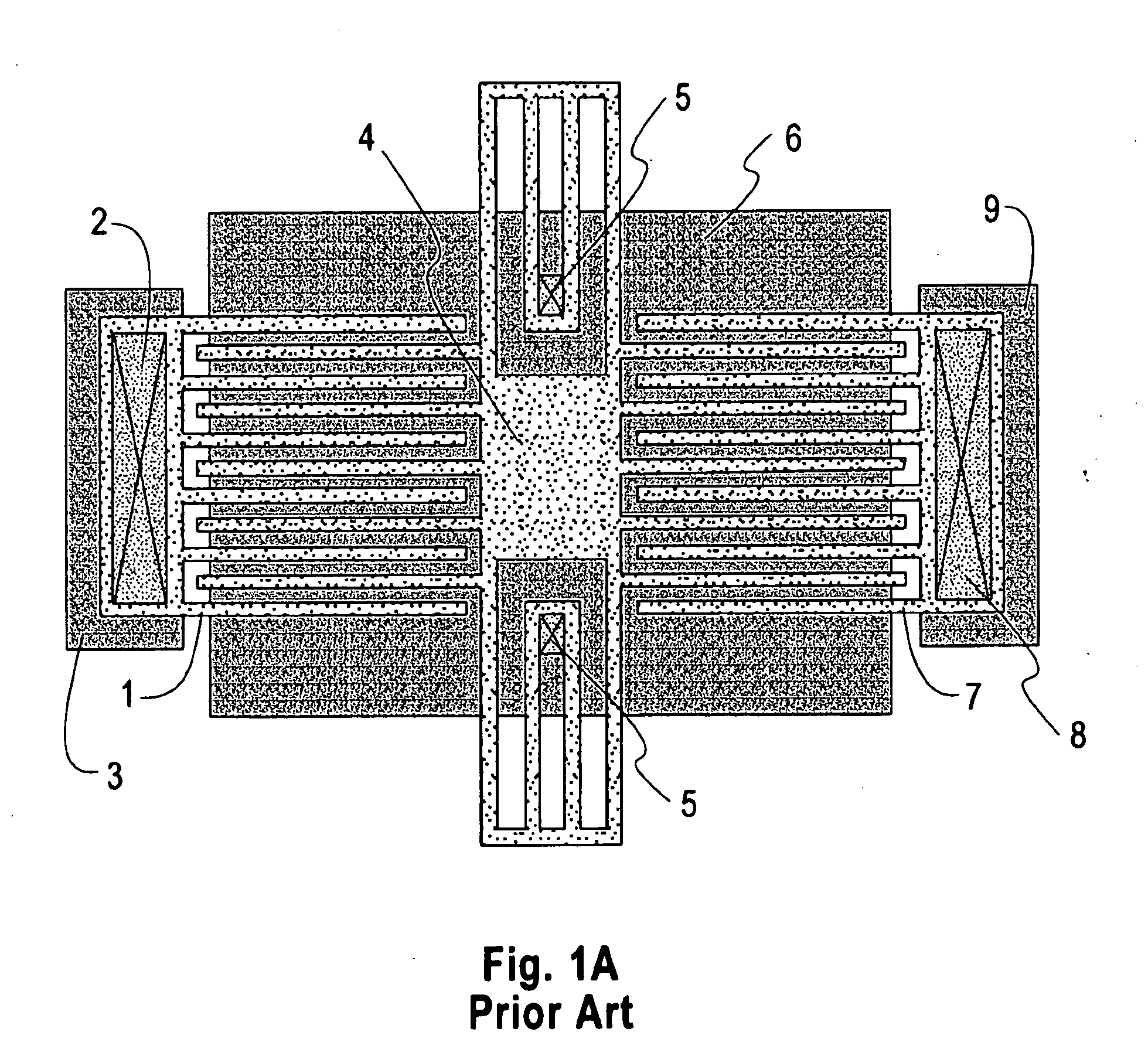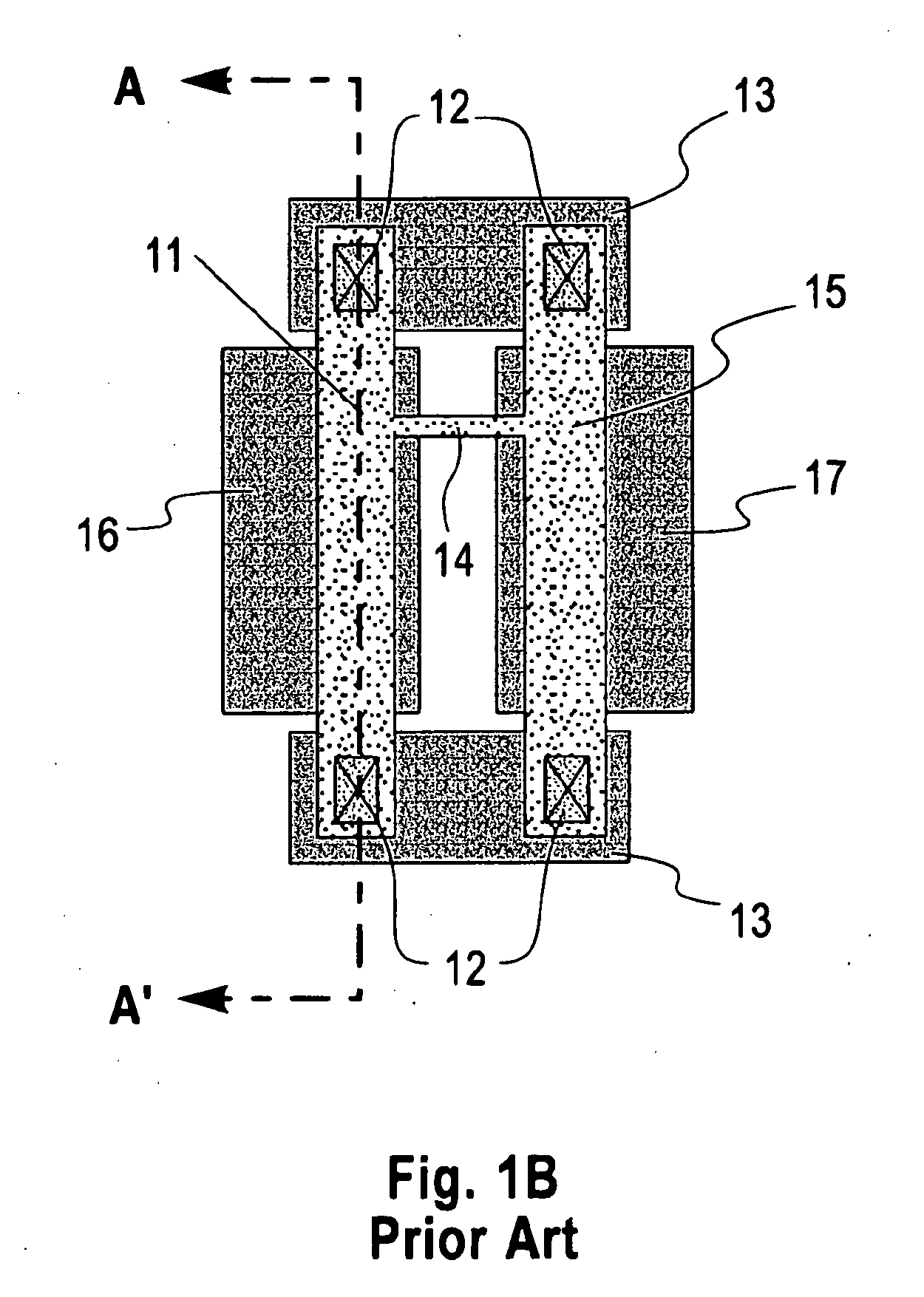Low temperature bi-CMOS compatible process for MEMS RF resonators and filters
a technology of resonators and filters, applied in the field of microelectromechanical systems (mems) resonators and filters, can solve the problems of high q's and reasonable sizes, not meeting the frequency or bias voltage targets required for incorporation with analog and mixed signal circuits, and developing resonators and filters
- Summary
- Abstract
- Description
- Claims
- Application Information
AI Technical Summary
Benefits of technology
Problems solved by technology
Method used
Image
Examples
Embodiment Construction
[0028]FIGS. 3-11B show cross-sectional views according to a preferred embodiment of the invention for a device such as the one shown in the prior art in FIG. 1B and in cross-section in FIG. 1C. However, MEMS resonators and filters can be designed in a wide variety of configurations including comb-drive resonators, beams fixed at two ends, beams fixed at one end, beams with suspensions, coupled beams, tuning forks, beams with bends or turns, curved beams, disks, and so on. These drawings of FIGS. 3-11B are in no way intended to exclude other geometries and configurations for building a MEMS resonator or filter, and all such geometries and configurations are included herein. The process of manufacture described is the same for all such configurations, and the design shown in FIGS. 3-11B is chosen for convenience of description only.
[0029]FIG. 2A shows a typical starting substrate 31 covered by an insulating layer 32. Starting substrates 31 may include a variety of materials such as si...
PUM
 Login to View More
Login to View More Abstract
Description
Claims
Application Information
 Login to View More
Login to View More - R&D
- Intellectual Property
- Life Sciences
- Materials
- Tech Scout
- Unparalleled Data Quality
- Higher Quality Content
- 60% Fewer Hallucinations
Browse by: Latest US Patents, China's latest patents, Technical Efficacy Thesaurus, Application Domain, Technology Topic, Popular Technical Reports.
© 2025 PatSnap. All rights reserved.Legal|Privacy policy|Modern Slavery Act Transparency Statement|Sitemap|About US| Contact US: help@patsnap.com



